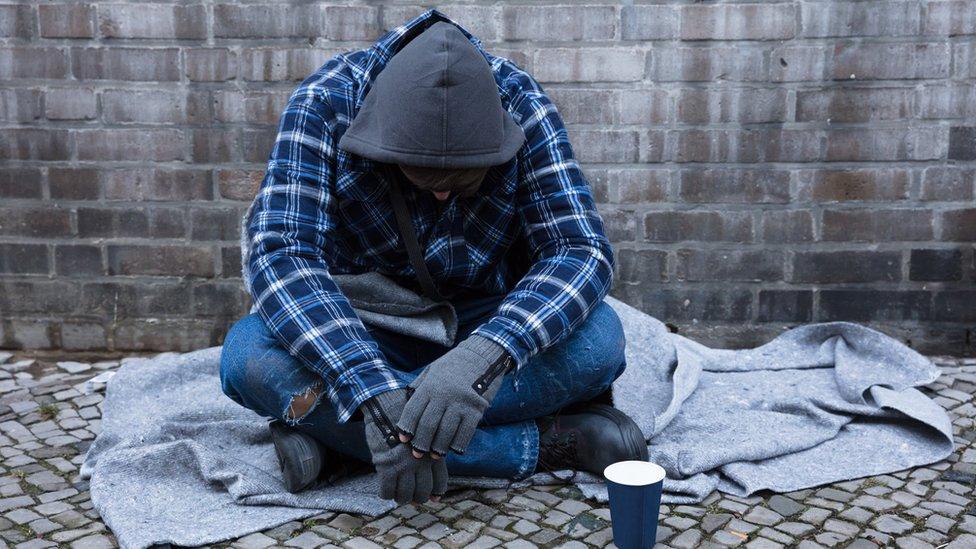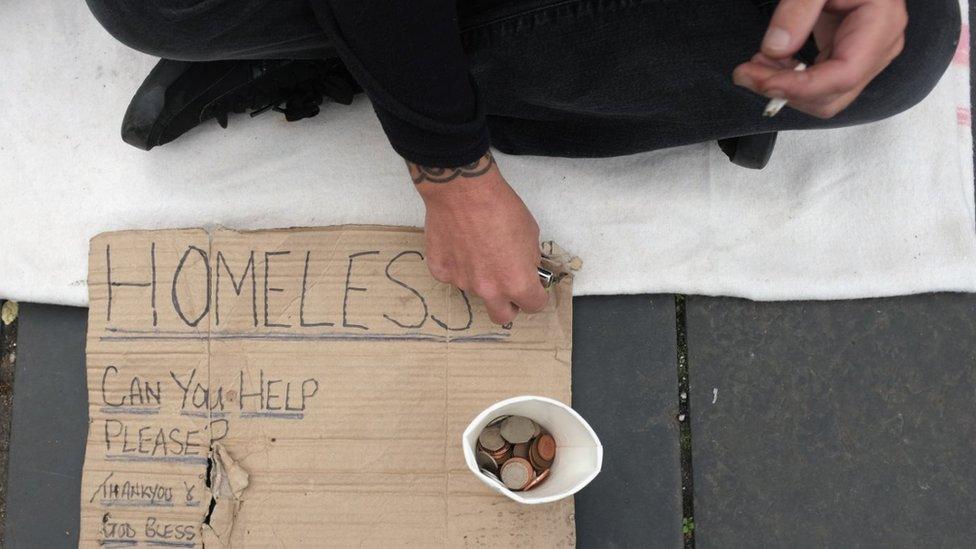Are more people sleeping rough in Scotland?
- Published

Experts say the chaotic and hidden nature of rough sleeping make it hard to measure
Counting rough sleepers is notoriously difficult, says Prof Glen Bramley, from Heriot-Watt University. He says people move around and often don't want to be found.
How do you count rough sleepers?
One method is "point-in-time" street count. In both England and Wales, some form of this is used to provide official statistics on the number of people who are street homeless.
However, according to Prof Bramley, this method is always likely to provide an underestimate because of the inherently chaotic and hidden nature of rough sleeping.
In London, where the problem is most severe, they have a system called CHAIN on which volunteers record a continuous count of people sleeping rough. This is more organised but essentially the same method, Prof Bramley says.
The Scottish government does not conduct a regular "headcount". Instead, it uses data from the form which is filled in by people making a homeless application to their local authority. The form asks whether a member of the applying household slept rough during the previous three months.
Prof Bramley says that because Scotland has an "inclusive" approach to tackling homelessness as many as 70% are in contact with their local authority at some point. A good starting point.
How many people are sleeping rough?
The official Scottish government figures for 2018/19, external show that 2,876 people experienced rough sleeping at least once during the three months before their homeless application. However, the number sleeping rough on any given night will be much lower.
There is no official number for how many people are sleeping rough each night but the Homeless Monitor Scotland 2019 report, external, commissioned for campaigning charity Crisis, has tried to work out a figure using all the data sources available.
It was published earlier this year and analysed data for 2017, so is about a year out of date.
But it suggests the annual number of rough sleepers in Scotland was about 5,300, with a nightly snapshot estimate of just over 700.
Further research by Prof Bramley suggests about 200 of these could be in Glasgow, which has particular problems with "extreme poverty and entrenched needs".
Has the number of rough sleepers risen?
The Homeless Monitor Scotland 2019 report said rough sleeping appeared to have been relatively stable over the past three years.
It said these numbers ranged between 650 and 800, and had fluctuated to only a moderate degree since 2011.

Research for the charity Crisis suggested more than 700 people could be rough sleeping nightly in Scotland
This analysis also indicates that levels of rough sleeping in Scotland may have fallen until around 2013 and remained relatively stable since then.
Prof Bramley said there was anecdotal evidence that it may have got worse in the past year, but that there was no official confirmation of this.
According to the official government stats, the numbers have reduced significantly since 2002/03.
Back then 13% of all applications had slept rough in the previous three months but that had fallen to 7% by 2014/15. It has since risen to 8%.
The Crisis report speculated that "harder-to-help" groups, such as drug addicts and those with chronic mental health issues, had benefited less from changes to the ways homelessness is tackled.